Hey everyone,
After an overwhelming amount of replies on Twitter (and LinkedIn), I decided to put together this case study.
I’m going to walk through exactly how I took a site from 0 visits per month to now 77,000 per year.

I genuinely hope that it provides a behind the scenes look into what an SEO campaign can look like.
This means being honest about the:
I know we in the SEO industry shy away from revealing sites publicly.
I understand.
But I’m willing to put everything on the table.
Why?
Because I want to destroy the notion that SEO is a dark art. That there is a secret everybody’s missing.
It’s this belief that allows people to sell courses for $997.
(It’s also the belief that results in me spending $1,000s on courses.)
Only to find out that SEO still consists of three fundamentals: content, links and, tech.
The nuances of each is where experience and hands-on knowledge can make all of the difference.
Well, I’m going to answer the what, how and why in this case study with complete transparency.
Let’s dive into it.
(Before we do, I no longer work with Moovshack. I stopped working for them in October 2021. Please be respectful of the information shared in this case study.)
The client operates in the property industry.
They exist to act as the go-between for estate agents and people looking to buy, sell or rent properties.
You can check them out here: moovshack[dot]com. (I’m not linking directly to the site - you can do a little bit of hard work.)
Prior to our engagement, there had been no work done to the site.
Nada, not a crumb.
But, if you’ve ever worked with a startup business, you’ll know why.
Every startup owner I’ve worked with is balancing a million things at once.
They’re the CEO, CTO, CFO, content writer, accountant and head of sales. Their time is limited and their attention is hard to keep.
Their website existed purely to host an app portal for their clients.
This is where the fun begins.
The site is built on Apache and WordPress. It’s almost stitched together on the front end but has no connection to the backend.
If I’m honest, it was an interim fix to a very long-term problem.
The developers didn’t have time to recreate the website to accommodate things like:
I had my work cut out for me.
Because of how the site was built, Google never bothered to give it any love or attention.
There was next to no content.
The theme was outdated and ugly.
There was no activity on the site at all.
I had my work cut out for me but, hey, we all love a challenge.
In addition to having a site that struggled to function, I also had to battle for sign-off on everything.
(Remember what I said about owners being busy?)
My main focus was making the site accessible to crawlers.
If you look at their search console, you’ll see an almost dead site.
Google was sending crawlers every 4 weeks. And, if I wanted to see any growth at all, I needed to fix that ASAP.
Here’s what I fixed first (I won’t breakdown each detail because, well, that’s boring):
It’s all pretty standard stuff.
Google was having a pretty hard time navigating the site.
After a week solid of having the developer’s attention, we managed to bring the load time down to (roughly) 3.5s.
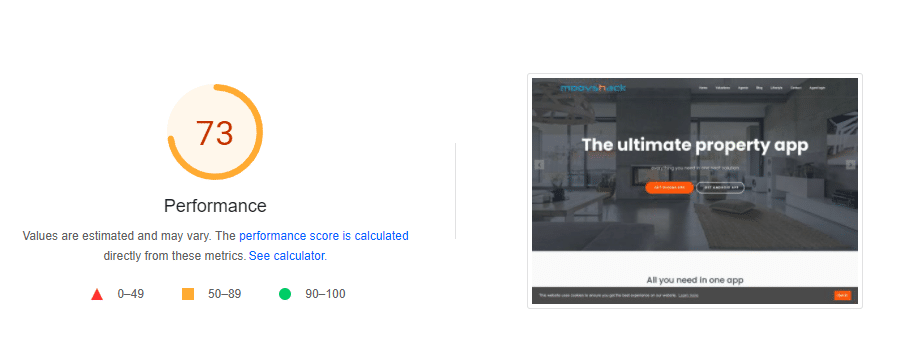
It wasn’t perfect, but it was a lot better.
We fixed the rendering issue which Salient was causing. If you’ve ever used Salient, you’ll be familiar with the page preloader.
This nifty little feature was preventing Google from seeing any content on the site.
Why?
Because the site took too long to load so Google only ever saw the spinning wheel of death. Which just happened to be a lot of JavaScript.
This was possibly the breakthrough moment we had with the site.
Now I knew Google could see the content and the site loaded in a reasonable time, I could move on to planning the content.
Just like any new domain, to see growth, I needed to focus on queries I felt comfortable I could rank for.
In the early stages of planning, I knew no commercial pages existed.
So, for me, it was simple.
Find as many relevant, low-difficulty terms for ‘moving house’ as possible. If I felt a keyword had decent enough volume, I planned it in.
I didn’t need to worry about keyword gaps.
We had no content.
Every title was a possible gap for us to rank for.
Our main focuses were:
It’s one of the very few benefits of starting with a new domain. A lot of your competitors have already done the hard work.
I simply found holes in their content that I could fill.
I did this by:
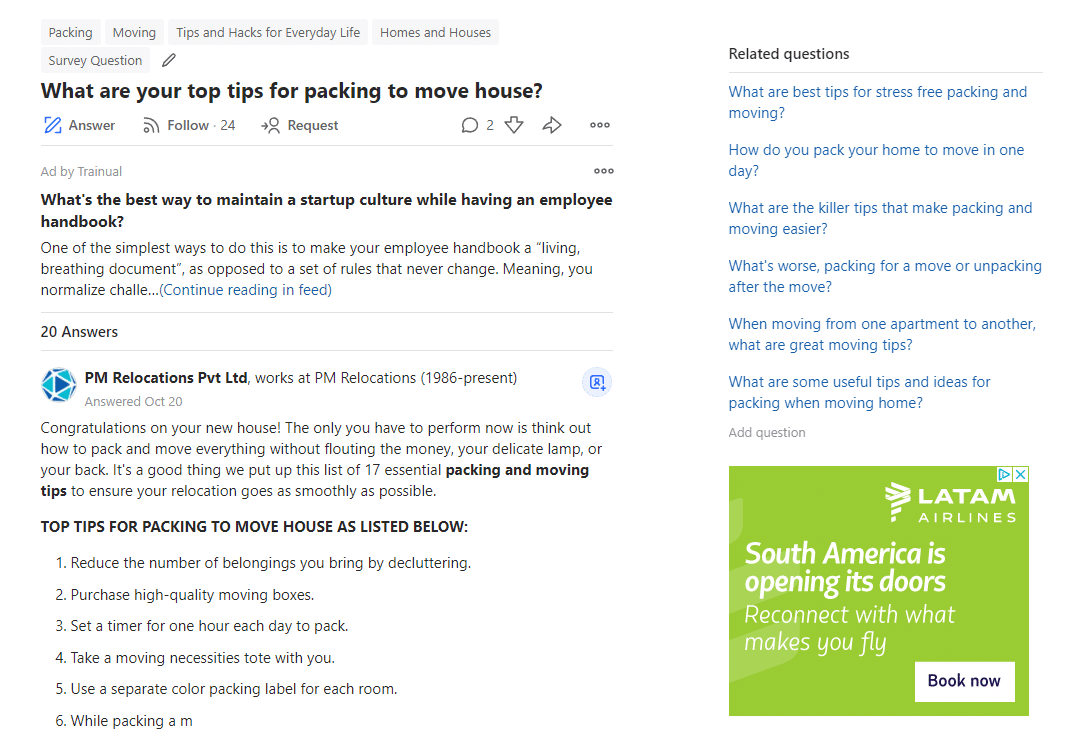
These are all perfect for adding unique angles or information to your content because it comes directly from your consumer.
After collecting this data and understanding how much more topical coverage our competitors had, I planned out the strategy.
We were going to accelerate for two months and then gradually decrease the volume once Google took notice.
Here’s an example of how my content calendar looked.
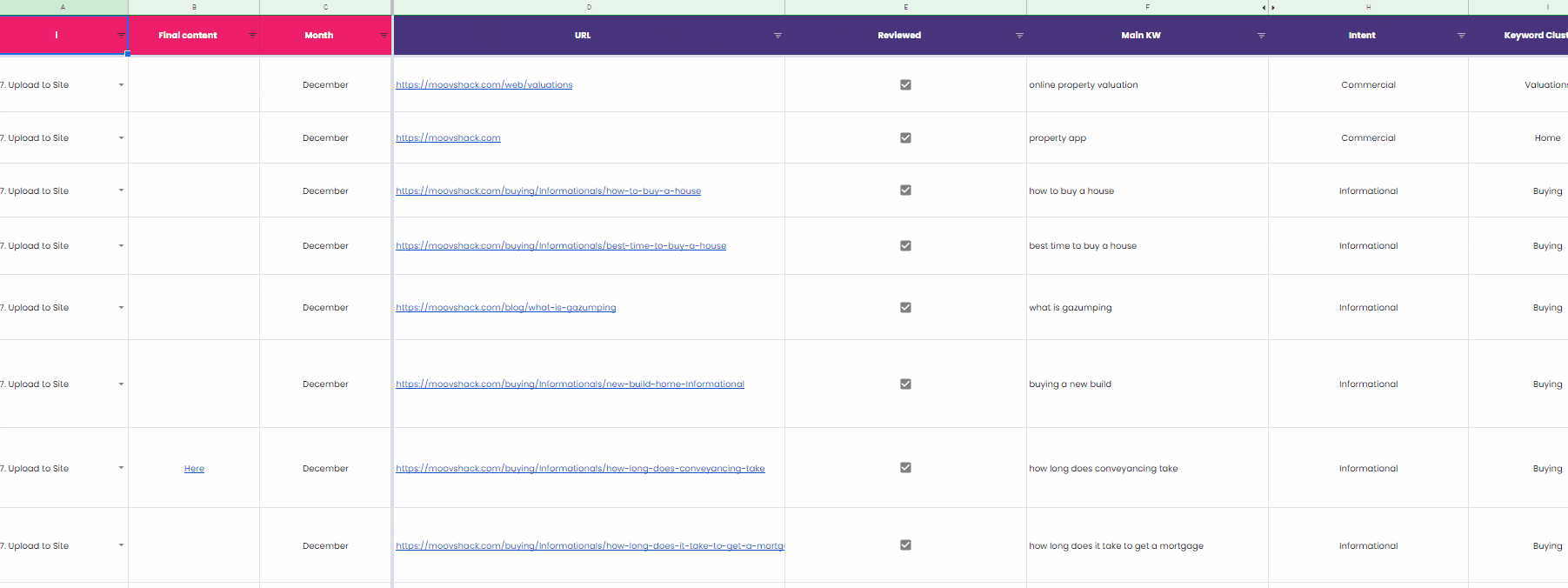
We had two writers in total producing this content.
This meant one writer could produce one article every two days for the month.
It turned out that the writer’s publishing cadence was one a day each. This meant I had two articles every day for two weeks (if we average it out).
Note: not all of the content made it to the site. I think we ended up with 60 articles in total on the blog.
Our plan was to compile our content from month 1 and upload it all at once. We didn’t drip feed it initially.
I wanted there to be a burst of activity on the site.
At the end of month 1, here’s how traffic looked:
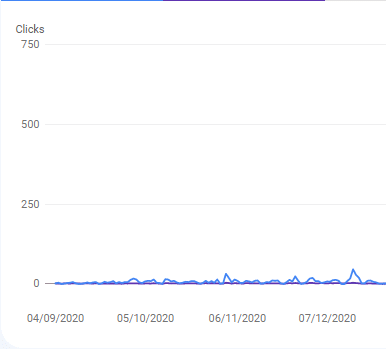
I know, it’s incredibly impressive.
I can hear Search Engine Roundup calling my name now for induction into the SEO Hall of Fame.
Whilst I can be extremely transparent about the ins and outs of this campaign, I think I owe it to the client to be less specific here.
The budget was between £2,000 - £5,000 per month for us to execute everything we planned. (If you missed it, I shared how that budget was split if you scroll your little fingers back up.)
This included my fee*.
Based on that, you now know this was an extremely low budget for the property niche and for SEO in general.
(*You should note now that my fee is much, much higher. Before I get any criticism.)
Links are my arch-nemesis.
I’ve always hated them. Because I’ve always struggled (morally) with delivering something I didn’t feel confident about.
The amount of absolutely shocking link providers in this industry is a joke.
It’s the reason why I’ve steered clear from them… after being burned.
For Moovshack, I wanted to do it my way.
I didn’t care if it took longer to do. I wanted to outreach websites myself for PR, guest posts and roundups.
In 6 months, I managed to build just under 100 referring domains.
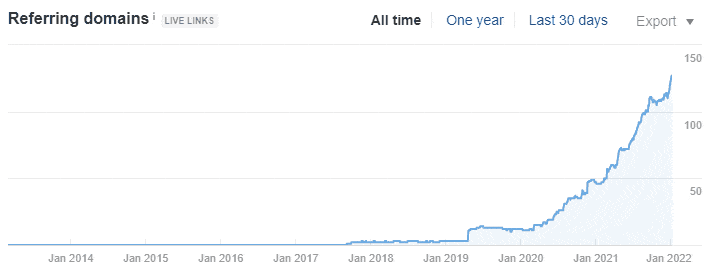
(Insert all the ‘hahaha, oh my God, is that it’?)
But, if I dig into the link profile a little more, here’s what I’ll find:
The list goes on and on.
You’ll see that I focused on relevancy here more than anything.
I could’ve spent a few thousand pounds of my client’s money on generic guest posts and then blamed Google when nothing worked.
(If you felt offended by that, it’s because it’s about you.)
But I didn’t.
I focused on:
I spent between 2-5 hours a week building links.
That included sourcing the targets through Ahrefs and emailing the sites.
My statement is this: high-relevancy links with traffic will always be your best option. Don’t be tricked or fooled by guest post providers on the internet selling you links based on DR.
It’s bullshit in isolation.
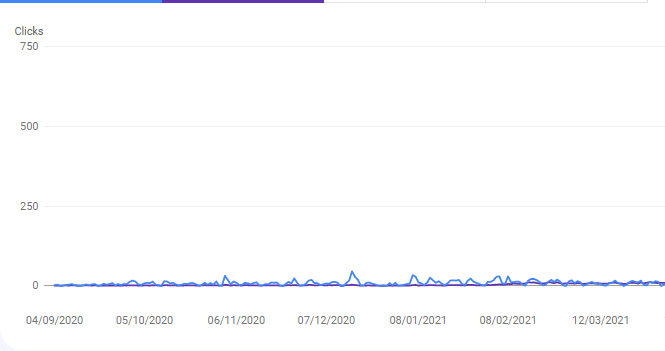
Guys, please, calm down with the compliments.
I know, it’s insane.
Here’s where things get serious.
By now you’re probably having quite serious conversations with your client about performance.
In fact, I was having those exact conversations.
I had spent a lot of time and money working on the website with very little to show for it.
I completely empathised.
But, at the same time, I also knew two things:
I told him if in the next 30 days there had been no movement, we could conclude the contract 3 months early.
So now I’ve done everything you’ve ever read online.
I produced a lot of content.
It was targeted to the primary keywords.
I focused on low-difficulty terms that I knew I could rank for.
I also built some links.
And the site was running properly.
Why wasn’t performance improving?
This is where I panicked.
If you’re an experienced SEO the thought ‘what have I done wrong?’ will undoubtedly cross your mind.
It did for me. In fact, this was one of the first times in my career that I truly doubted my ability.
I went back through my work and ruthlessly analysed it.
I found a handful of potential issues which could’ve been holding the site back:
So, I decided to de-optimise my pages.
A counterintuitive thing to do but nonetheless, I needed to test and see if it worked.
I stripped back 30 pages of content where I was the outlier in the SERPs.
This means identifying who’s competing for the term, how long that page has existed and what their keyword density is.
My pages were young and Google’s algorithms move fast.
Pages that might be keyword heavy (but have existed for two years) might have a buffer due to traffic, engagement and links over time.
I know people will say ‘keyword density isn’t a thing’.
Thankfully I don’t care about theoretical observations.
I care about what works.
After working on this for a few days, I resubmitted my pages in search console. I only did this for absolute assurance that Google now understood my pages had been updated.
And then, it happened…
Life.

After 4 months of nearly no movement, Google finally decided to recognise our efforts as a brand.
The trigger for this rapid growth was featured snippets.
I landed the featured snippet for ‘how to cancel your council tax’ and it brought in thousands of visits.
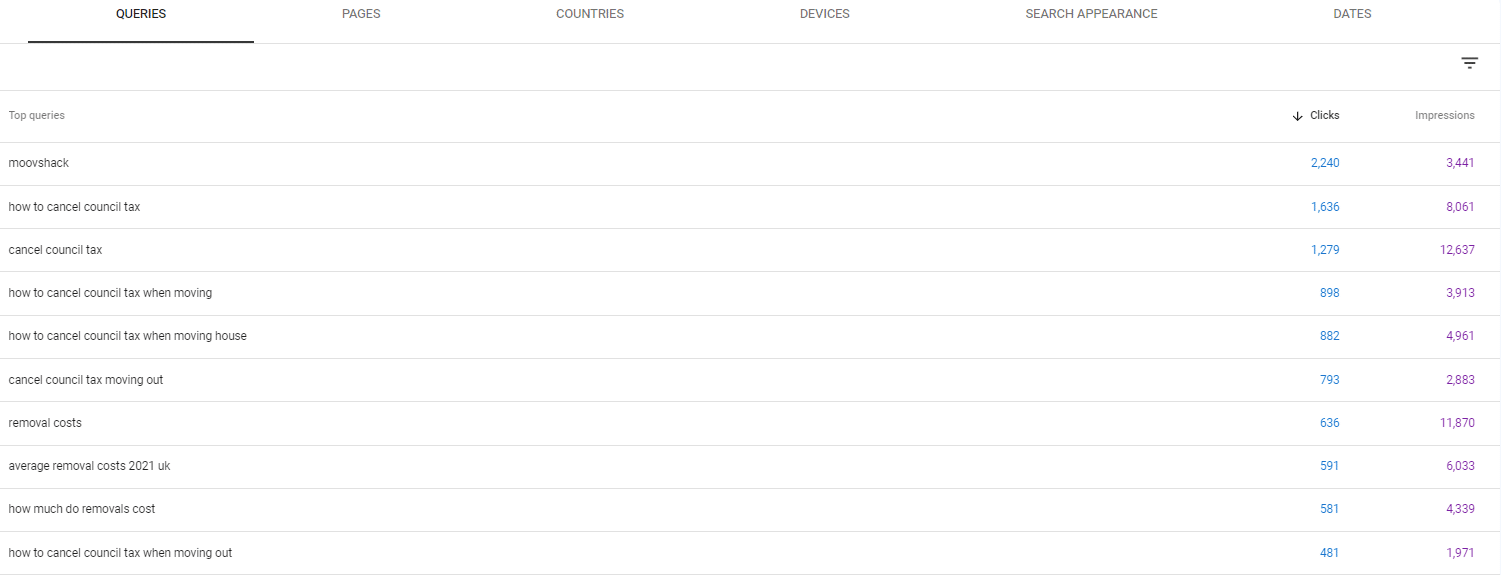
Once Google found its way into our site, more content started to rank.
And this is why compounding your efforts is so important to SEO.
If I had stopped uploading content or stopped building links in month 3, this never would’ve happened.
And until AI takes all of our jobs, SEO will forever be a long-term play.
SEO isn’t about your graph being bigger than mine.
It’s being able to execute and get results even with constraints and limitations. No matter what form they come in.
This is a small client that now gets between 7,000 - 8,000 visits per month. For a startup business, that could be priceless.
It can help with investment. It can help with sponsorship opportunities. It gives more leverage in the online world.
I was able to (a single person) with two writers, and a very limited budget, build something I’m really proud of.